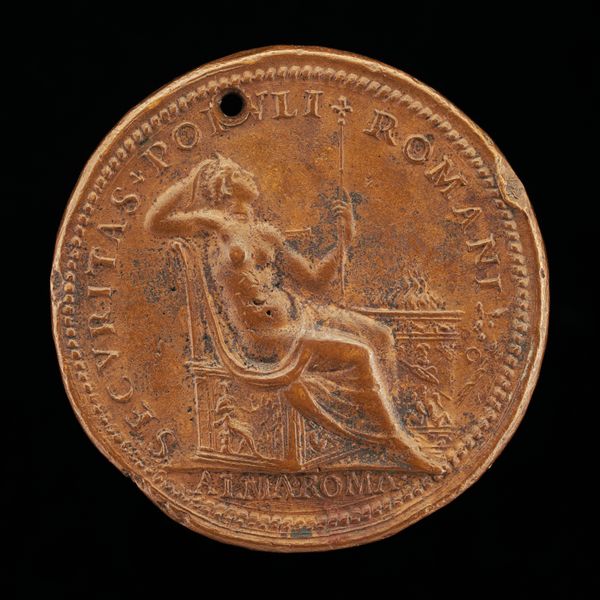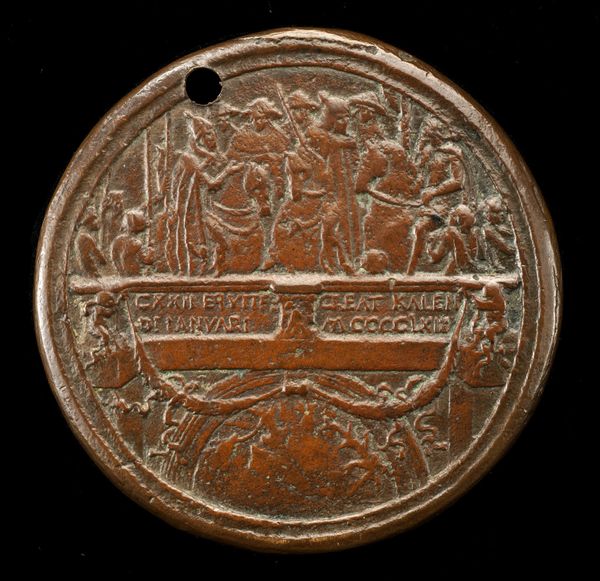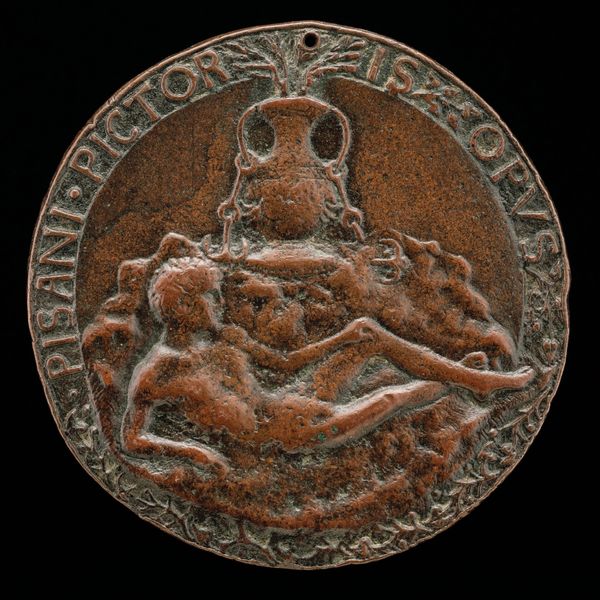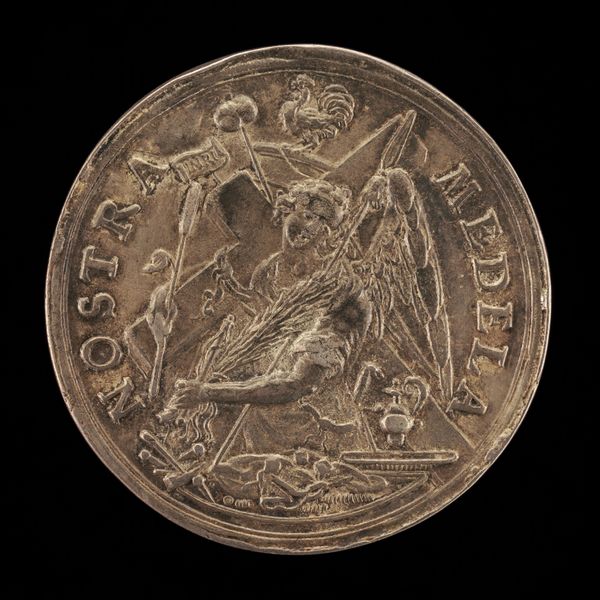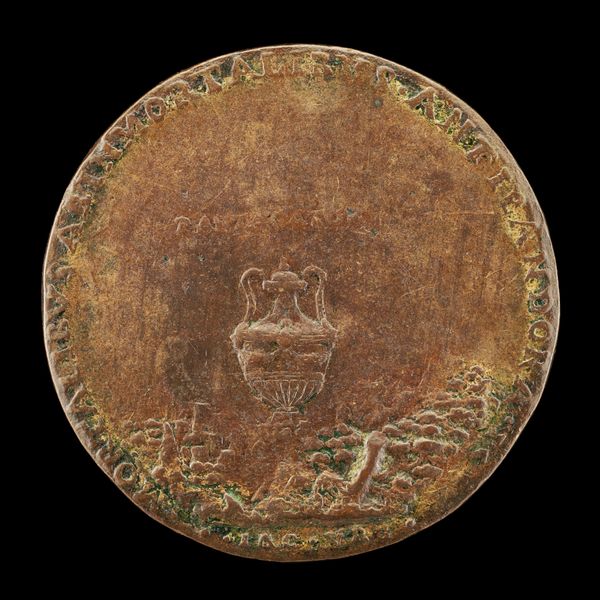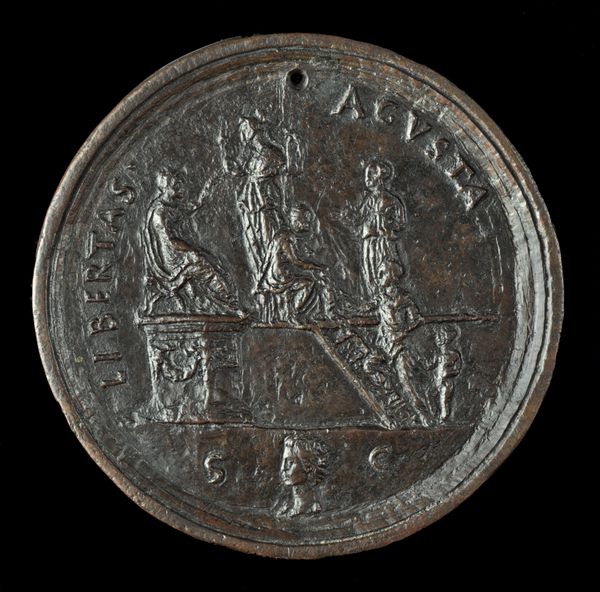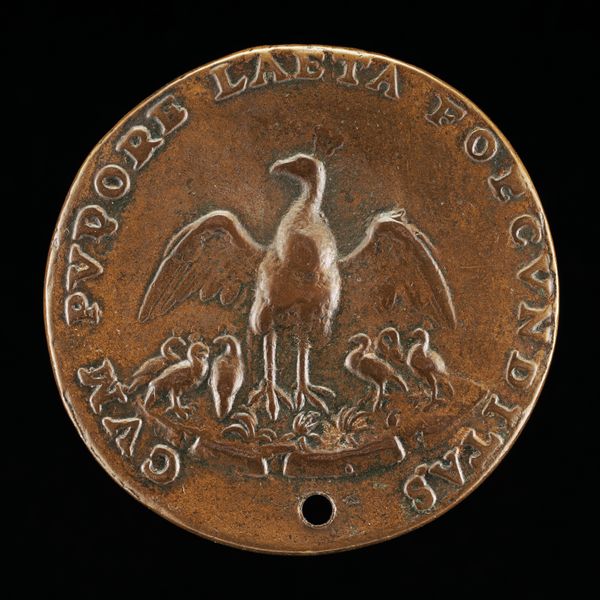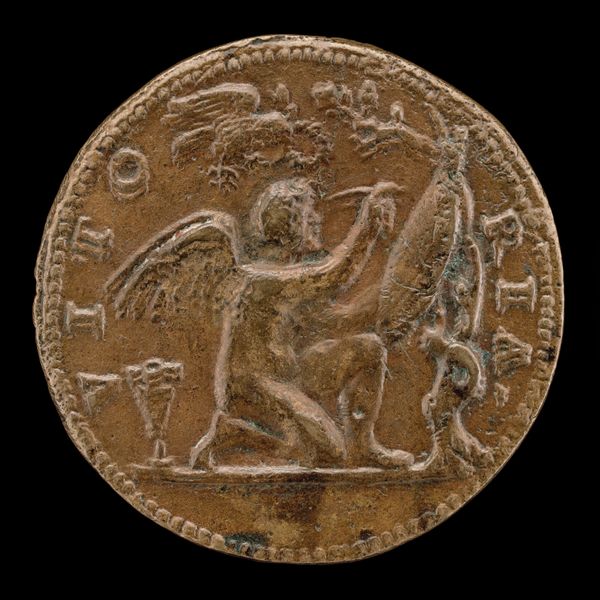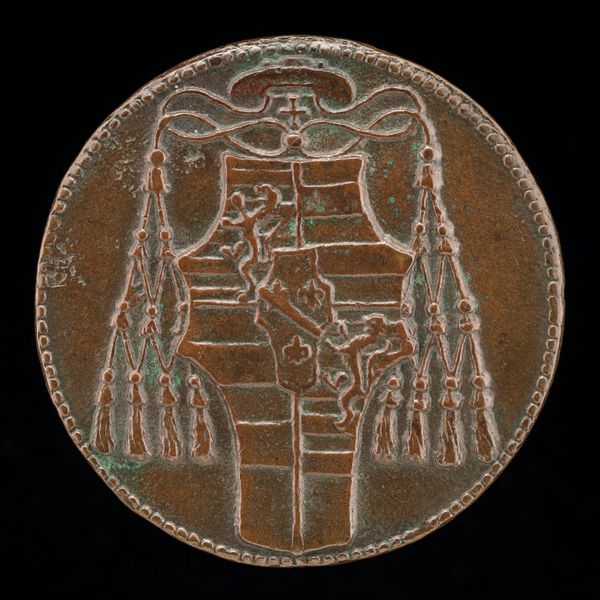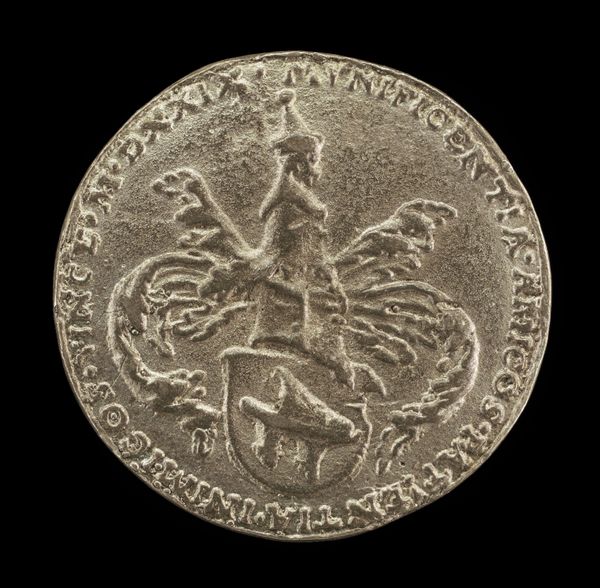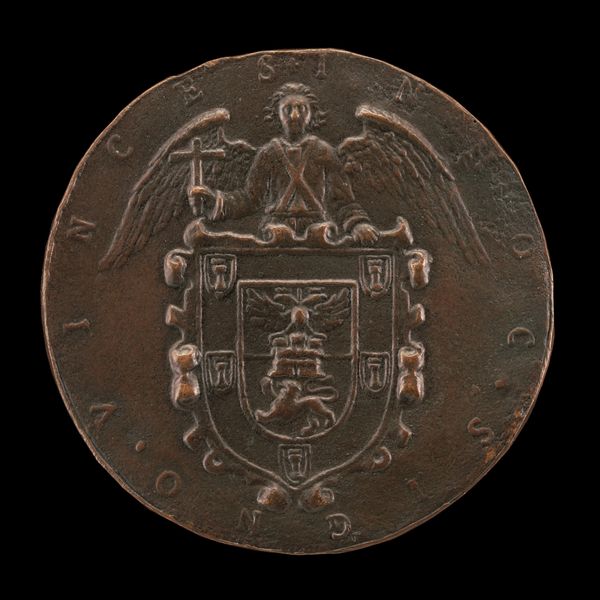![Cherub, Swan, and Eagle [reverse] by Mea](/_next/image?url=https%3A%2F%2Fd2w8kbdekdi1gv.cloudfront.net%2FeyJidWNrZXQiOiAiYXJ0ZXJhLWltYWdlcy1idWNrZXQiLCAia2V5IjogImFydHdvcmtzL2FlZDQ2NmYzLTBhNWMtNDM2MS04MjZmLTI5MjRkZDFjMjZkZC9hZWQ0NjZmMy0wYTVjLTQzNjEtODI2Zi0yOTI0ZGQxYzI2ZGRfZnVsbC5qcGciLCAiZWRpdHMiOiB7InJlc2l6ZSI6IHsid2lkdGgiOiAxOTIwLCAiaGVpZ2h0IjogMTkyMCwgImZpdCI6ICJpbnNpZGUifX19&w=3840&q=75)
relief, bronze, sculpture
#
medal
#
stone
#
sculpture
#
relief
#
bronze
#
sculptural image
#
figuration
#
11_renaissance
#
sculpture
#
history-painting
Dimensions: overall (diameter): 3.93 cm (1 9/16 in.) gross weight: 21.88 gr (0.048 lb.) axis: 12:00
Copyright: National Gallery of Art: CC0 1.0
Curator: What an interesting Renaissance bronze relief medal. It's called "Cherub, Swan, and Eagle [reverse]", dating back to around 1513. Editor: It has a somber but curious air, with those three creatures arranged so deliberately. What's with the placement? Is that “Ter Max” on the lower band? Curator: That's right, you have a keen eye! In terms of materiality, notice the smooth, almost polished surface of the bronze, which gives a tactile quality, in contrast with its intricate details achieved by laborious carving. Editor: Looking at the political context of the time, medals like this served several purposes; commemorating figures of authority or historical events while reinforcing systems of power. How are these images playing into this narrative of power? Curator: Medals are usually understood as commemorating achievements of individuals, but in the Italian Renaissance, medals sometimes took on another purpose, in this case perhaps functioning more like talisman. The phrase inscribed at the bottom "TER MAX", could reference Hermes Trismegistus. Editor: I see how you tie those threads together! So, how did its circulation work back then, influencing beliefs? Was its craftsmanship perceived as something of high value, influencing perceptions on its function or use? Curator: The production and possession of these medals represented refined taste and classical erudition. Their distribution networks allowed ideologies and artistic styles to permeate, cementing hierarchies of taste and solidifying networks between individuals in power. Editor: It's amazing how much information this object holds! For the contemporary listener, examining such an object opens paths towards crucial discourses around political symbolism in art. Curator: Precisely! It speaks of the constant artistic ingenuity and technological advances from the Italian Renaissance, offering clues about that period’s cultural nuances, socio-political power structures, and symbolic frameworks. Editor: Seeing this in the present allows me to recognize both the ever-shifting definitions of artistry while drawing broader connections between power dynamics in different societies.
Comments
No comments
Be the first to comment and join the conversation on the ultimate creative platform.

